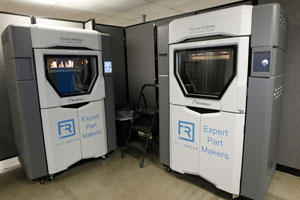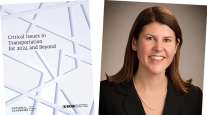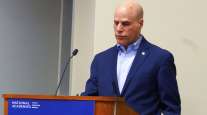Drones, 3-D Printing to Speed Change in Freight Transportation

WASHINGTON — While freight transportation has undergone enormous change over the past quarter-century, even more is coming and very quickly, driven by demanding customers and an amazing array of technology that might actually allow carriers to satisfy shippers.
Parcel delivery with drones, 3-D printing and yet more software were among the options discussed at a Transportation Research Board panel here Jan. 10.
Last-mile delivery keeps supply chain executives up at night and worrying, said Anne Strauss-Wieder, director of freight planning for the North Jersey Transportation Planning Authority, adding that tension is acute in the retail sector.
“Malls are going out of business, and retail chains are closing. Who remembers Radio Shack? And goodbye Sports Authority,” she said, adding that today’s customers are more picky about what they want and when they get it.
“We’re going from one-day delivery to same-day, and it’s not just in a city like New York. It also affects rural populations who are getting better choices,” Strauss-Wieder said. Rising from the ashes of brick is e-commerce fulfillment, which has the potential to become an enormous employer.
One method of last-mile delivery will be drones, which are well-suited to delivering packages weighing up to five pounds.
“Drones will become ubiquitous, between 20 million and 100 million in the U.S. one day,” aviation economist Darryl Jenkins predicted.
Amazon, Wal-Mart, Domino’s Pizza, Google’s parent Alphabet and Mercedes-Benz have expressed interest in drones, Jenkins said.
The appeal of the gadgets is that they work cheaply. Jenkins estimates it costs 61 cents an hour to operate a drone.
UPS Inc. will keep delivering packages with trucks and planes for the foreseeable future, but company Vice President Derrick Johnson said North America’s largest trucking company is ramping up its work with three-dimensional printing, which could change significantly where a package gets picked up — at a factory or at UPS’ 3-D location in Louisville, Kentucky. The company also has a location in Singapore.
Johnson said the 3-D printing industry generated about $7 billion in revenue last year, and it is expected to rise to $21 billion in 2020.
“About 20% of our customers dabble in 3-D currently, and 60% are curious about it,” he said.
Brokerage software provider Transfix is smitten with truckload carriage, calling it “an industry ripe for disruption,” said Pamela Hepworth, the company’s product marketing director.
She said an Uber-like approach for matching loads with drivers will provide more and better information for both parties and improving efficiency.
“We can take less of a cut [than a traditional freight broker] because we’re more efficient,” Hepworth said.
The notion of some small carriers and owner-operators still using paper transactions, fax machines and telephone conversations means there is plenty of room for increasing productivity, she said.
“The technology of everyday consumer life,” she said, would be “revolutionary in trucking.”




